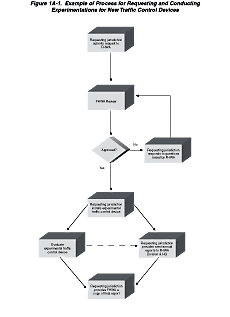1 Aashto Roadside Design Guide
Clear Zones By creating Clear Zones, roadway agencies can increase the likelihood that a roadway departure results in a safe recovery rather than a crash, and mitigate the severity of crashes that do occur. A Clear Zone is an unobstructed, traversable roadside area that allows a driver to stop safely, or regain control of a vehicle that has left the roadway. The width of the clear zone should be based on risk (also called exposure).


Late 1960's – AASHTO created the. 1989 – AASHTO published the first edition. Roadside Design Guide. All situations where: Speed. Errata to Roadside Design Guide, 4th Edition. Existing Text. Corrected Text. In Table 3-1, U.S. Customary units, the.
Key factors in assessing risk include traffic volumes, speeds, and slopes. Clear roadsides consider both fixed objects and terrain that may cause vehicles to rollover. Horizontal ‘clearance’ must not be confused with ‘clear zone’.
The minimum 18 inch horizontal clearance to objects behind curbs that is specified in the AASHTO Green Book is a minimum standard offset that allows for normal traffic operations. Because curbs do not deter errant vehicles from leaving the traveled way, the minimum horizontal clearance does not provide a clear zone sufficient to accommodate errant vehicles. The recommended clear zones in the AASHTO Roadside Design Guide (RDG) are based on the design speed of the facility and the slope of the roadside and are not affected by the presence of curbs. It is recognized that providing a clear zone as recommended in the RDG may not be practical in low speed curbed facilities because of right-of-way constraints and other realities of the built environment and a design exception is not required in these cases. However, the minimum 18 inch horizontal clearance to vertical obstructions must still be met unless a design exception is approved. Clear Zones.
This document provides guidance to help highway agencies develop their own standards and policies for determining the widths of clear zones along roadways based on speed, traffic volume, roadside slope and curvature. The recommended clear zone ranges are based on a width of 30 to 32 feet for flat, level terrain adjacent to a straight section of a 60mph highway with an average daily traffic of 6000 vehicles. For steeper slopes on a 70 mph roadway the clear zone range increases to 38 to 46 feet, and on a low speed, low volume roadway the clear zone range drops to 7 to 10 feet. For horizontal curves the clear zone can be increased by up to 50 percent from these figures. The MUTCD requires that sign supports within the clear zone be made breakaway or shielded by a barrier. All new sign installations shall meet these criteria. Existing sign supports located on highways posted at 50 mph or greater shall meet this criterion by January 10, 2013.
On roads posted at speeds 45 mph or lower, the breakaway criterion may be met when upgrading sign retroreflectivity. This page provides additional clarification on the design of clear zones and the distinction between clear zone and horizontal clearance. Trees and Landscaping Considerations. This report provides agencies with examples of successful–immediately deployable–tree and pole practices. These practices range from complex, multi-million dollar contract solutions to in-house practices.
1 Aashto Roadside Design Guide 2011 Pdf
DVD: Highway Safety and Trees: The Delicate Balance Trees are the single most commonly struck objects in roadside crashes. This 12-minute DVD produced by the FHWA encourages communities to work with roadway agencies to improve safety, while minimizing environmental impacts. The DVD was designed for use at State and local highway agency meetings, public hearings, and town meetings. To obtain copies, e-mail, and request publication number FHWA-SA-06-13. This tri-fold brochure presents an overview of issues related to trees and highway safety, and tells where to find more information. A Guide for Addressing Collisions with Trees in Hazardous Locations , 981 KB A Guide for Addressing Collisions with Trees in Hazardous Locations is Volume 3 of NCHRP Report 500: Guidance for Implementation of the AASHTO Strategic Highway Safety Plan. This guide focuses on measures that can mitigate impacts of tree crashes.
Collisions With Trees One-Pager 201 KB. This research study conducted for Caltrans looked at median collisions, and found that there was a significant association between crash severity and the presence of large trees. This web site is the transportation community's online resource center for Context Sensitive Solutions (CSS). Here’s where to find information about the FHWA's involvement with CSS. Utilities and Roadside Safety. A Guide for Reducing Collisions Involving Utility Poles , 1.23 MB A Guide for Reducing Collisions Involving Utility Poles is Volume 8 of NCHRP Report 500: Guidance for Implementation of the AASHTO Strategic Highway Safety Plan. This presents measures that reduce the severity and number of fatality utility pole crashes.
It’s the perfect accessory to your Delaware Learning Institute of Cosmetology training. STUDENT KIT Your Esthetics Program Student Kit not only helps you make the most of your classroom experience, it also includes exclusive resources you won’t find anywhere else. Salon fundamentals cosmetology study guide.
Major objectives are: (1) treat specific utility poles in high-crash and high-risk spot locations; (2) prevent placing utility poles in high-risk locations; and (3) treat several utility poles along a corridor to minimize the likelihood of crashing into a utility pole if a vehicle runs off the road. Collisions Involving Utility Poles One-Pager 120 KB This is a one-page fact sheet designed to accompany the NCHRP report. Highway Utility Guide 33 KB Published by the FHWA in 1993, this document provides guidance on locations for utilities, including utility poles, within highway rights-of-way.